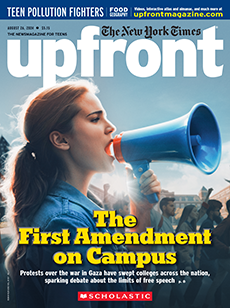1. Set Focus
In what ways can someone’s religious beliefs affect their life?
2. List Vocabulary
Share with students some of the challenging vocabulary words in this article (below). Encourage them to use context to infer
- secular (p. 6)
- barred (p. 6)
- conspicuous (p. 7)
- observant (p. 7)
- codified (p. 8)
- pivotal (p. 8)
3. Engage
Ask students to think about the article’s title and the photo on page 6. Have them discuss what they think the article will be about, based on these elements.
